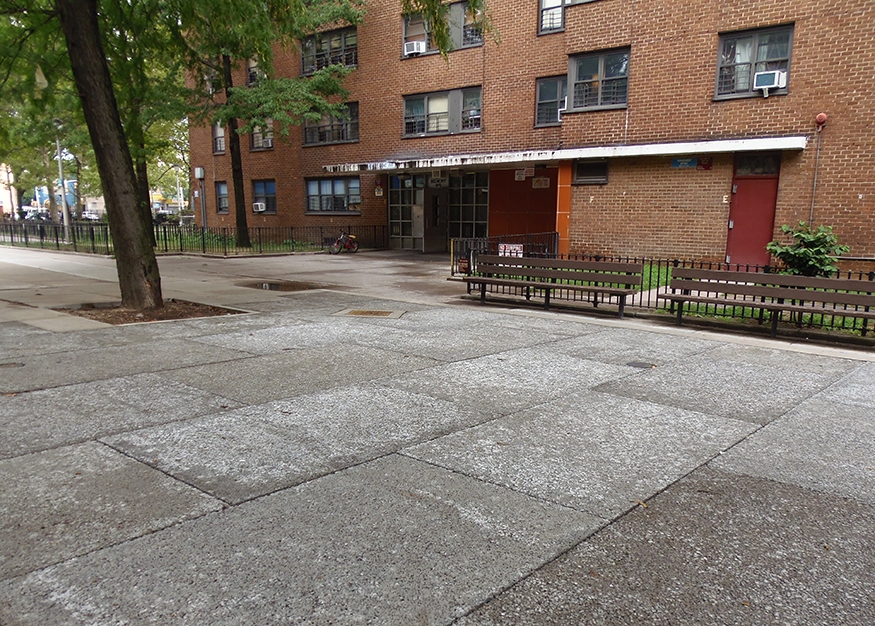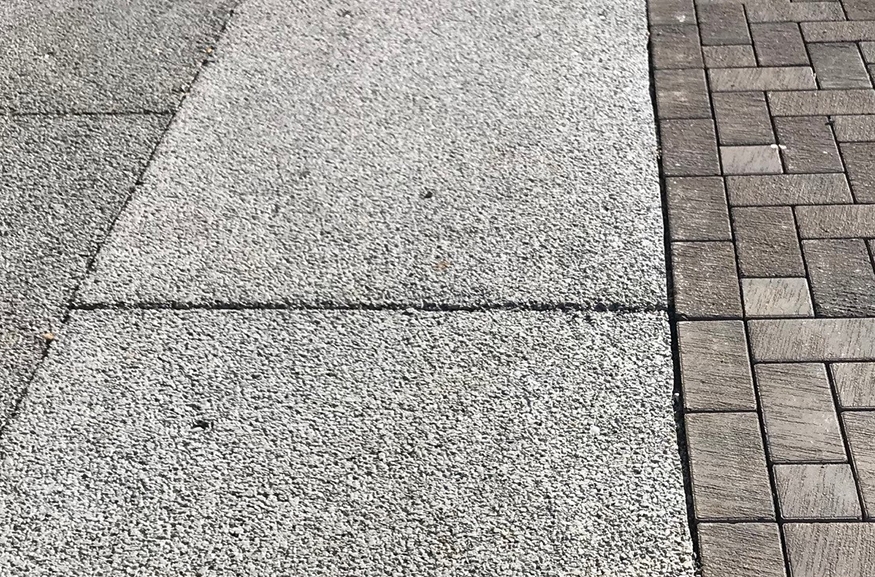Usage: Pilot
Concrete mixture using admixtures to allow a smaller amount of cementitious paste to coat the aggregate, and using little or no sand or fine aggregate, leaving substantial void content. This allows water to pass through to an open-graded reservoir underneath.

Seth Low Houses, Brooklyn

Sidewalk with pervious concrete
Benefits
See benefits of Unpigmented Concrete
- Reduces impermeable surface, thereby increasing water infiltration
- Reduces peak sewer discharge during storm events
- Reduces likelihood of ponding and slick or icy conditions
- Helps reduce urban heat island effect
Considerations
See considerations for Unpigmented Concrete
- Extra care must be taken where there is water-sensitive sub-surface infrastructure
- Only certain soil types are appropriate as sub-bases for infiltration
- Porosity of the concrete can convey harmful chemicals into the soil
- Sand and certain chemical de-icers should not be applied to surface
- Contractors should be certified to install cast-in-place pervious concrete, which requires specially-trained concrete finishers
- Slump, air content, and strength tests are not applicable to pervious concrete
Application
- Pervious concrete is a pilot material that the city is testing at select locations
- Use of this material beyond the city-led pilots will require a maintenance agreement
- Most effective on slopes less than 5%
- Must have adequate sub-surface conditions to detain stormwater and level bottom to allow for uniform infiltration
- Can be used to pave an entire sidewalk or just hardscape between Connected Tree Beds
- Avoid sites where there is potential for soil and groundwater contamination
- Not recommended for implementation over significant underground utility corridors
Design
Specification source: Special Section GI-2.04
See design guidance for Unpigmented Concrete
- Typically an 8- to 24-inch open graded stone infiltration bed is recommended
- Generally 4 – 8 inches thick
- Pervious concrete should maintain a 15 – 25% void content ratio
- Bottom of infiltration bed should be at least 2 feet above high water table and 2 feet above bedrock
Maintenance
- Use of this material requires a maintenance agreement
- Requires routine vacuuming of surface using a regenerative air sweeper to restore permeability

